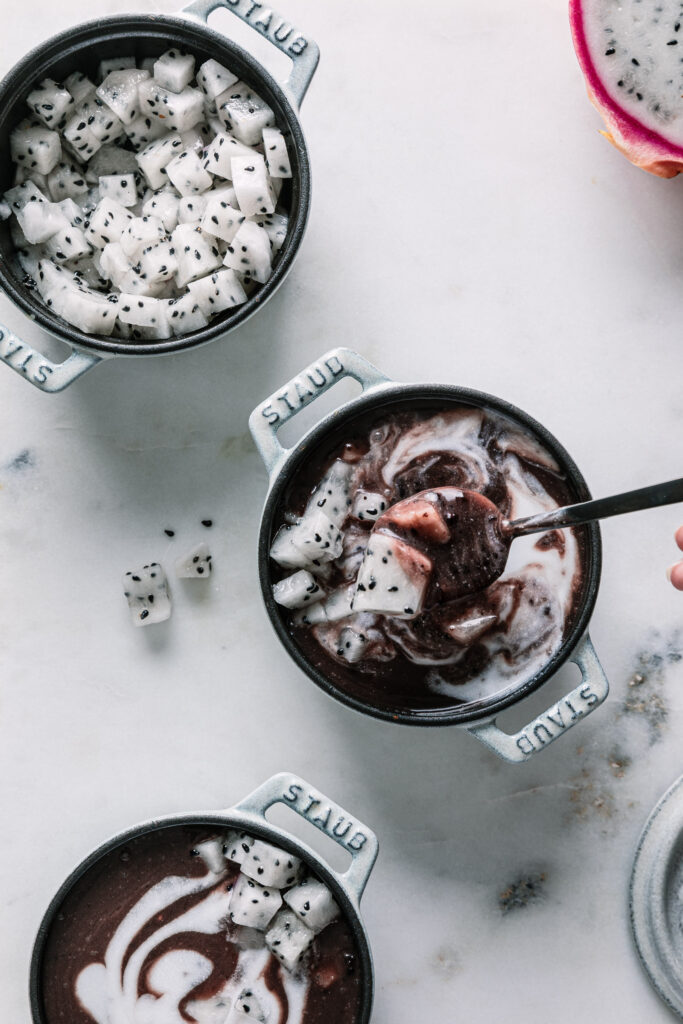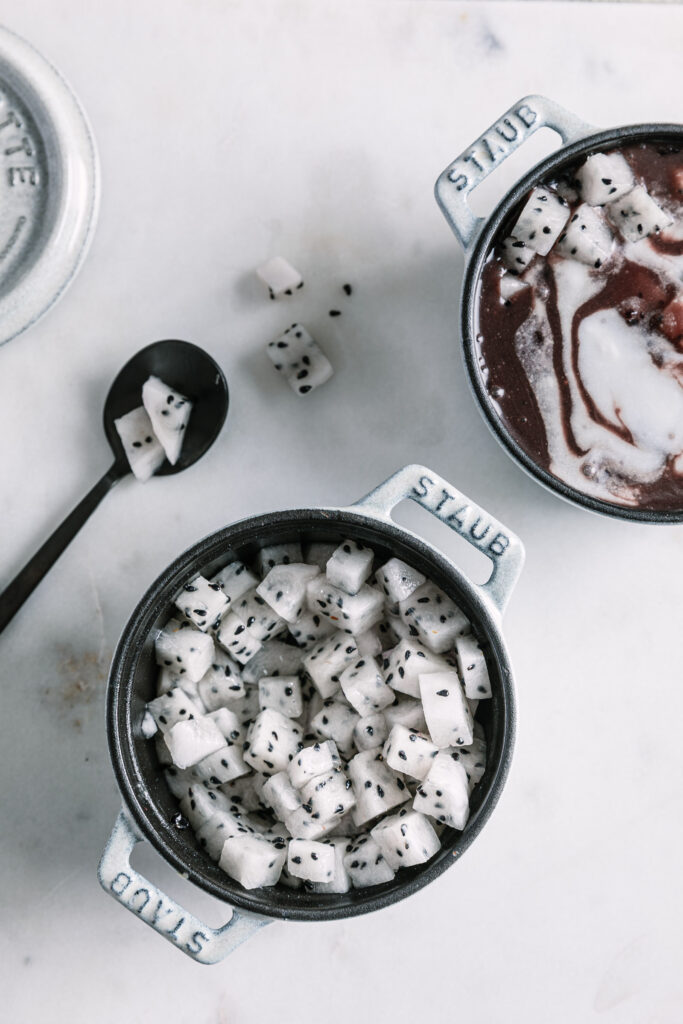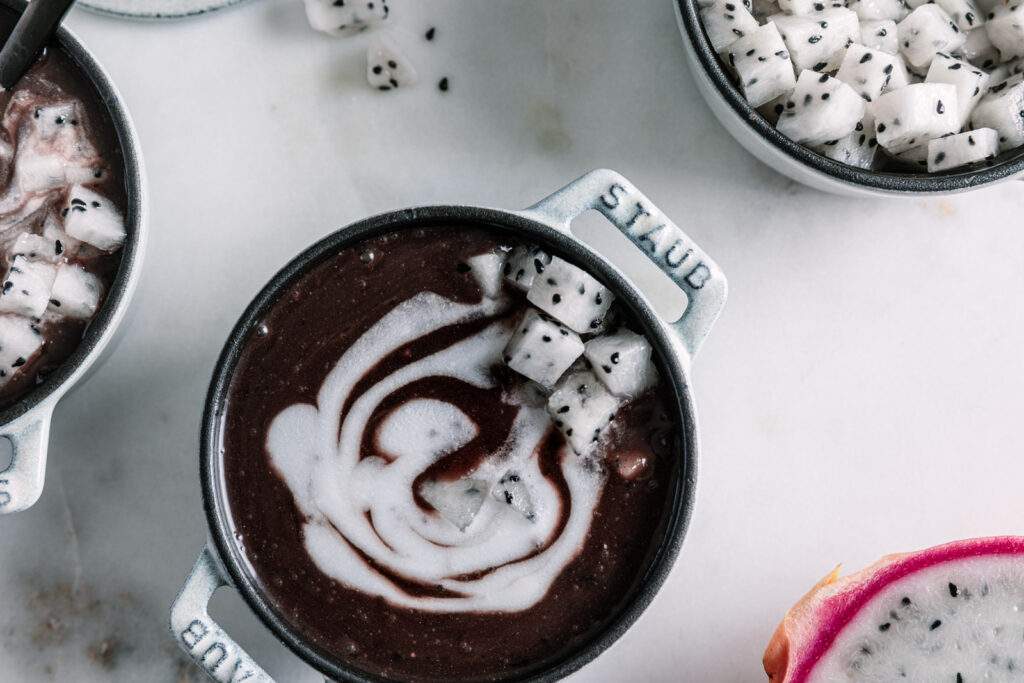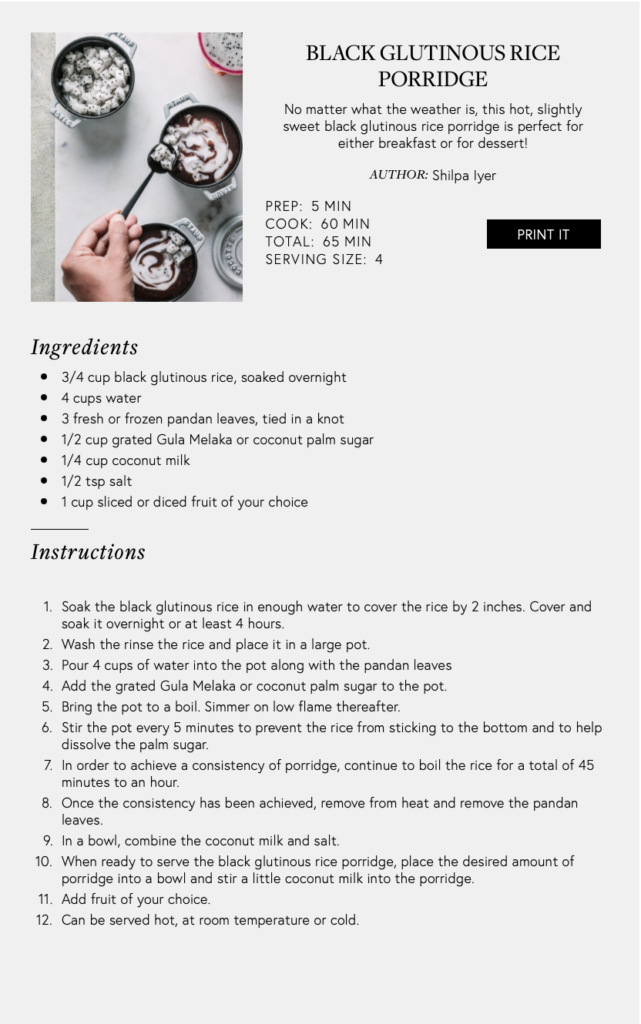


Bubur Pulut Hitam, which literally translates to Black Glutinous Rice Porridge in Malay is a dessert and breakfast dish commonly served in Singapore. You’d find this in many of the drinks and desserts shops at the local hawker centers or easily made at home for when you have cravings for something chewy, nutty, slightly sweet and yet healthy(ish) for you. Packed with fiber, vitamins and antioxidants, black glutinous rice is a staple found all over South East Asia.
What is black glutinous rice?
Black glutinous rice is the unpolished short grain version of white glutinous rice. It’s grown in Thailand and other parts of South East Asia. With plenty of health benefits like high fiber, vitamins, minerals and antioxidants, black glutinous rice is used in a variety of both savory and sweet dishes in the region. While actually purple in color, this rice shouldn’t be confused with the Chinese black rice which is also known as Forbidden Rice.
What sugar substitutes can I use for this dish?
Traditionally this dish calls for Gula Melaka which is also known as coconut palm sugar. Palm sugar is typically found as round cakes which can be shaved with a knife and used in your dishes. In fact on occasion, I will use it in my coffee or make a quick syrup by dissolving the palm sugar and water and pouring it on pancakes and French toast. If you’re unable to find the discs of palm sugar, you can usually find granulated coconut palm sugar at your local health food stores. You can definitely use brown or white sugar in this dish, but keep in mind that the dark caramel like flavors of palm sugar will be missing from your porridge. It still tastes great with other sugar alternatives, so feel free to use it.
Can I make this dish without pandan leaves?
The short answer is of course! However, do try to find pandan leaves, even if it’s fresh. You can read more about it here. But in a nutshell pandan leaves are the “Vanilla of South East Asia” and impart a delicious vanilla, coconut and rose flavor to any dish. If you can’t find pandan leaves, feel free to leave it out or add 1 tsp of vanilla essence to your porridge after you’ve removed it from the stove. While it’ll have a different flavor, it’ll definitely taste just as good!

Comments +